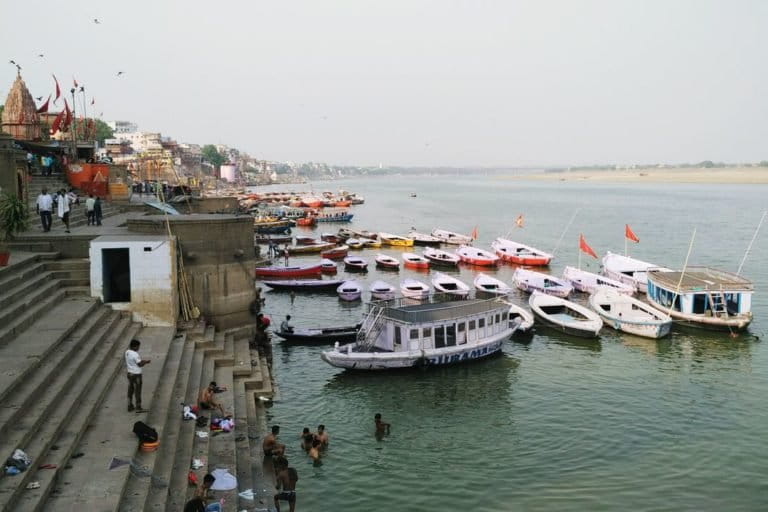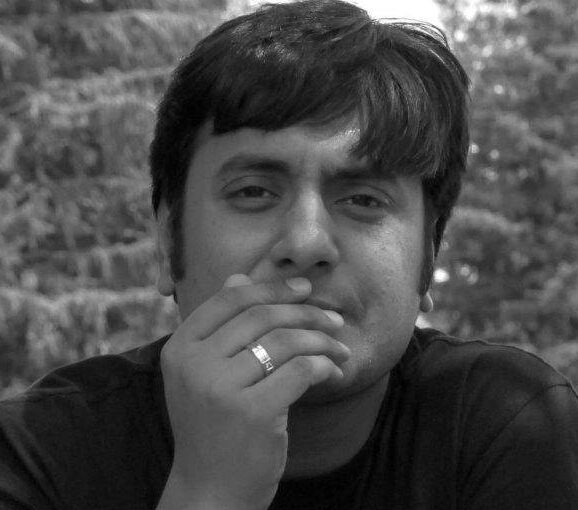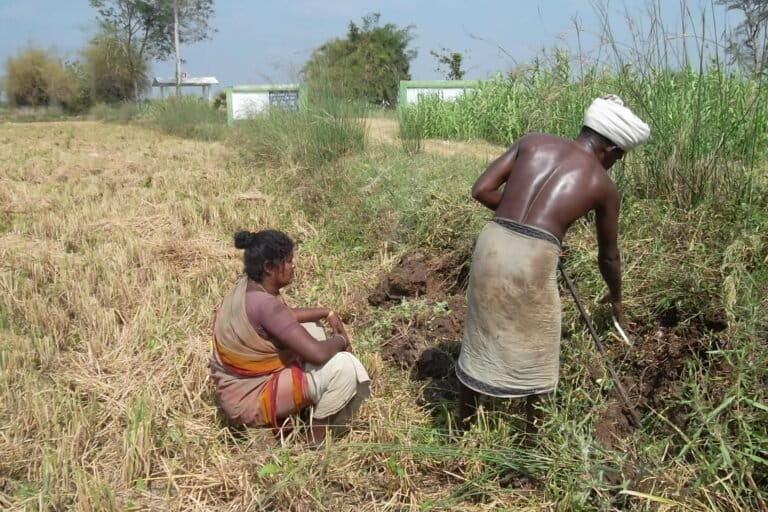- In its latest budget, the central government has announced a vision for cleaning the rivers across India by 2030 but environmentalists state that the track record of authorities doesn’t inspire much confidence.
- According to government’s own data, the number of polluted stretches of rivers in India have increased over the past few years. The ambitious ‘Namami Gange’ project is also yet to yield any concrete results.
- Environmentalists allege that the government’s approach is contractor driven and would result in a vicious cycle. They want the authorities to focus on using the treated sewage water for irrigation rather than dumping it into rivers.
India wants to clean its rivers by 2030 but it may remain a distant dream if the authorities continue with business as usual. The target seems difficult as government’s own data reveals that the number of polluted stretches of rivers across the country has increased in the last few years and the ambitious plan to clean river Ganga is yet to yield concrete results.
While outlining the government’s vision for 2030 in the interim budget 2019-2020 in the parliament in February 2019, Finance Minister Piyush Goyal said that “our rivers and water bodies are our life supporting assets.”
“Our government has worked vigorously for cleaning river Ganga. Fifth dimension of our vision for India of 2030 is clean rivers, with safe drinking water to all Indians, sustaining and nourishing life and efficient use of water in irrigation using micro-irrigation techniques,” said Goyal.
However, it is much easier said than done. Recently, India’s Minister of State in the Ministry of Environment, Forest and Climate Change (MoEFCC) Mahesh Sharma revealed to the parliament that polluted river stretches across the country have increased in the past few years.
In response to a query, Sharma on February 4, 2019 told the parliament that the Central Pollution Control Board (CPCB) in association with the state pollution control boards (SPCBs) monitors the water quality of rivers across the country through a network of monitoring stations under the National Water Quality Monitoring Programme.
Polluted river stretches in India have increased
As per the report published by the CPCB in February 2015, 302 polluted river stretches have been identified on 275 rivers, spread over 28 states and one union territory, based on the Bio-chemical Oxygen Demand (BOD) levels, a key indicator of organic pollution. In the latest CPCB report of September 2018, 351 polluted river stretches have been identified on 323 rivers, spread over 29 states and two union territory.
The minister’s reply also revealed that the polluted river stretches in southern states have increased over the years. According to the data, of the 302 polluted stretches identified in 2015, 48 were in five southern states and, in 2018, of the total 351 polluted stretches, 59 were in the five southern states and one union territory.
“The increase in polluted river stretches can be attributed to increase in number of rivers being monitored and number of water quality monitoring stations over the years (from 1,275 monitoring stations in 2015 to 1,822 monitoring stations at present) as well as increase in pollution loads, primarily due to rapid urbanisation,” said Sharma while emphasising that pollution abatement of rivers is a continuous and ongoing process.
“It is the primary responsibility of the state governments/local bodies concerned to set up facilities for collection, transportation and treatment of sewage being generated and ensure that untreated sewage does not fall into the rivers, thereby polluting them. This ministry has been supplementing the efforts of the state governments in abatement of pollution in identified stretches of various rivers under the scheme of National River Conservation Plan (NRCP), on a cost sharing basis between the central and state governments,” he added.

However, environmentalists are critical of the government’s approach. “The government’s perspective is that it wants to give contracts to contractors for making dams so that the flow of rivers is obstructed and rivers becomes polluted … then they want to give the money to contractors to clean that pollution. The government does not want the rivers to be cleaned as it wants a vicious cycle which is contractor driven. If they remove dams and let the rivers flow, they will revive themselves,” environmentalist Bharat Jhunjhunwala told Mongabay-India.
Environment minister Mahesh Sharma’s concern regarding rapid urbanisation is not without any reason. Pollution load of India’s town and cities falling into rivers is one of the major hindrances in cleaning of rivers and other water bodies.
Recently, the National Green Tribunal, while hearing a case, said that more than 60 percent of the sewage generated by urban India is untreated and enters water bodies like rivers, resulting in pollution and making it unfit for human consumption. The tribunal called it an issue of serious concern and noted that compliance of environment norms is not satisfactory resulting in large scale deaths and diseases and serious damage to air, water and earth.
On this, Jhunjhunwala stressed that rather than putting all treated and untreated sewage into rivers, it should be used for irrigation.
“This will mean the same amount of water not being extracted from the rivers – so you will have more water into rivers and less pollution because sewage would not be dumped in them. But this is not what the government want,” he added.
River cleaning programmes remain ineffective
Concerns of environmentalists about efficiency of government’s programmes are not without a reason as programmes for river conservation and cleaning are not new in India. In 1985, the then Prime Minister Rajiv Gandhi-led Congress government started a Ganga Action Plan to clean the river Ganga, which is considered sacred by millions of Indians.
In 1995, the then central government started a National River Conservation Plan and a ‘Yamuna Action Plan’ to clean the river Yamuna.
After assuming power in May 2014, the Narendra Modi-led National Democratic Alliance (NDA) government started an ambitious Ganga cleaning programme, ‘Namami Gange’ as well. But despite numerous efforts, majority of the rivers in the country including Ganga remain polluted.
The issue of a clean Ganga is also expected to feature in the parliamentary elections scheduled later this year as opposition parties have been highlighting that the current government has failed to clean the river.
As per the information given by Satya Pal Singh, the Minister of State in the Ministry of Water Resources, River Development and Ganga Rejuvenation to parliament, the NRCP has so far “covered polluted stretches of 33 rivers in 76 towns spread over 15 States in the country at a sanctioned cost of Rs 48,01 billion (Rs. 4,801.57 crore) and Central share of Rs 23.37 billion (Rs. 2337.73 crore) has been released to the State Governments for implementation of various pollution abatement schemes.”
“Sewage treatment capacity of 2,520.43 MLD (Million Litres per Day) has been created so far under the NRCP,” said Singh in reply to a query in parliament on February 11, 2019.

To ensure proper treatment of municipal wastewater before discharge into the rivers, CPCB, which is the apex body of the country to look into pollution related issues, has issued directions under the Water (Prevention and Control of Pollution) Act, 1974 in April 2015 to all the SPCBs for setting up of Sewage Treatment Plants (STPs) in their respective States. In October 2015, it issued directions to municipal authorities of 66 metropolitan cities and state capitals under the Environment (Protection) Act, 1986 to ensure proper treatment and disposal of sewage generated for abatement of pollution of rivers.
CPCB has also issued repeated directions to control discharge of industrial effluents and has asked many of them to install 24×7 online effluent monitoring systems.
For cleaning Ganga, Singh said that the government has taken several steps.
“For Ganga and its tributaries, the government of India has launched Namami Gange Programme covering short-term, medium-term and long-term activities. In the short term certain entry level activities which cover development of ghats and crematoria and river surface cleaning activities have been taken up. Under medium-term activities, existing STPs and effluent treatment plants (ETP) are being upgraded and new STPs and ETPs are being established,” said Singh.
“Besides, rural sanitation has been taken up in the villages on the banks of river Ganga. The long-term action plan involves restoration of wholesomeness of river Ganga including afforestation, biodiversity conservation and maintaining its ecological and geological identity of river. Towards the long term planning, the central government have issued notification on minimum environmental flow on river Ganga to be maintained at various locations on the river,” Singh stressed.
Under the Namami Gange Programme, so far, 261 projects have been sanctioned at an estimated cost of Rs 255.63 billion (Rs. 25,563.48 crore), out of which 76 projects have been completed and made operational while rest of the projects are at various stages of implementation.
Singh emphasised that “efforts are being made to complete the short-term and medium-term activities by 2020.”
However, environmentalists are not impressed. “The exact details of the government’s 2030 vision to have clean rivers is not yet out. But it could be similar to what is going on right now – to have more riverfront development plans, more dams, interlinking of rivers and waterways,” said Himanshu Thakkar, coordinator of the South Asia Network on Dams, Rivers and People (SANDRP), a network of organisations and individuals working on issues related to the water sector, specifically associated to large dams.
“The government is taking up major interventions adversely affecting the rivers without so much as even pretence of environment or social impact assessments, independent appraisal or public consultations. This shows how little faith the government has in informed or democratic decision making,” Thakkar told Mongabay-India.
Banner image: Flow of sewage into rivers continues to be the problem in cleaning of rivers. Photo by Ministry of Water Resources/Wikimedia Commons.














